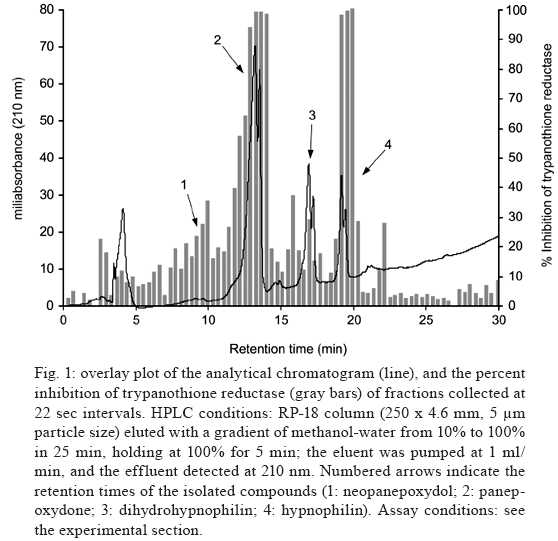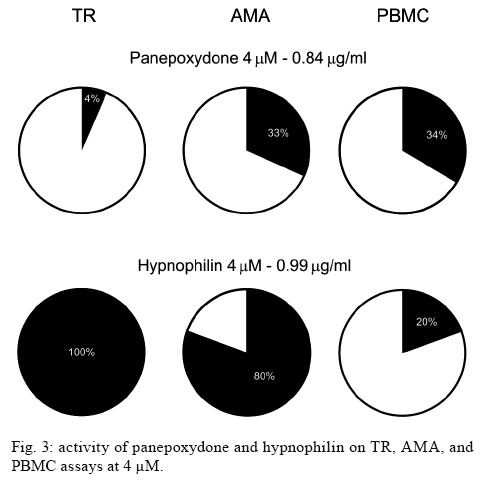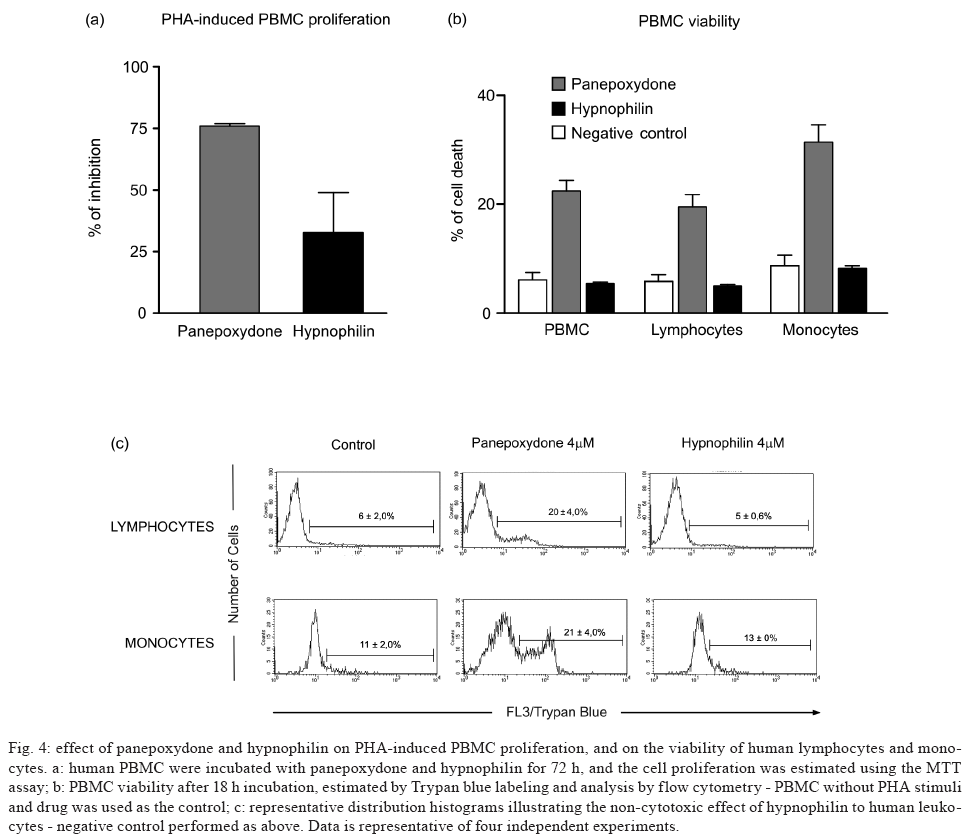The fungus Lentinus strigosus (Pegler 1983) (Polyporaceae, basidiomycete) was selected in a screen for inhibitory activity on Trypanosoma cruzi trypanothione reductase (TR). The crude extract of L. strigosus was able to completely inhibit TR at 20 µg/ml. Two triquinane sesquiterpenoids (dihydrohypnophilin and hypnophilin), in addition to two panepoxydol derivatives (neopanepoxydol and panepoxydone), were isolated using a bioassay-guided fractionation protocol. Hypnophilin and panepoxydone displayed IC50 values of 0.8 and 38.9 µM in the TR assay, respectively, while the other two compounds were inactive. The activity of hypnophilin was confirmed in a secondary assay with the intracellular amastigote forms of T. cruzi, in which it presented an IC50 value of 2.5 µ M. Quantitative flow cytometry experiments demonstrated that hypnophilin at 4 µM also reduced the proliferation of human peripheral blood monocluear cells (PBMC) stimulated with phytohemaglutinin, without any apparent interference on the viability of lymphocytes and monocytes. As the host immune response plays a pivotal role in the adverse events triggered by antigen release during treatment with trypanocidal drugs, the ability of hypnophilin to kill the intracellular forms of T. cruzi while modulating human PBMC proliferation suggests that this terpenoid may be a promising prototype for the development of new chemotherapeutical agents for Chagas disease.
fungal natural products; Chagas disease; drug discovery; immunomodulators; Basidiomycota






